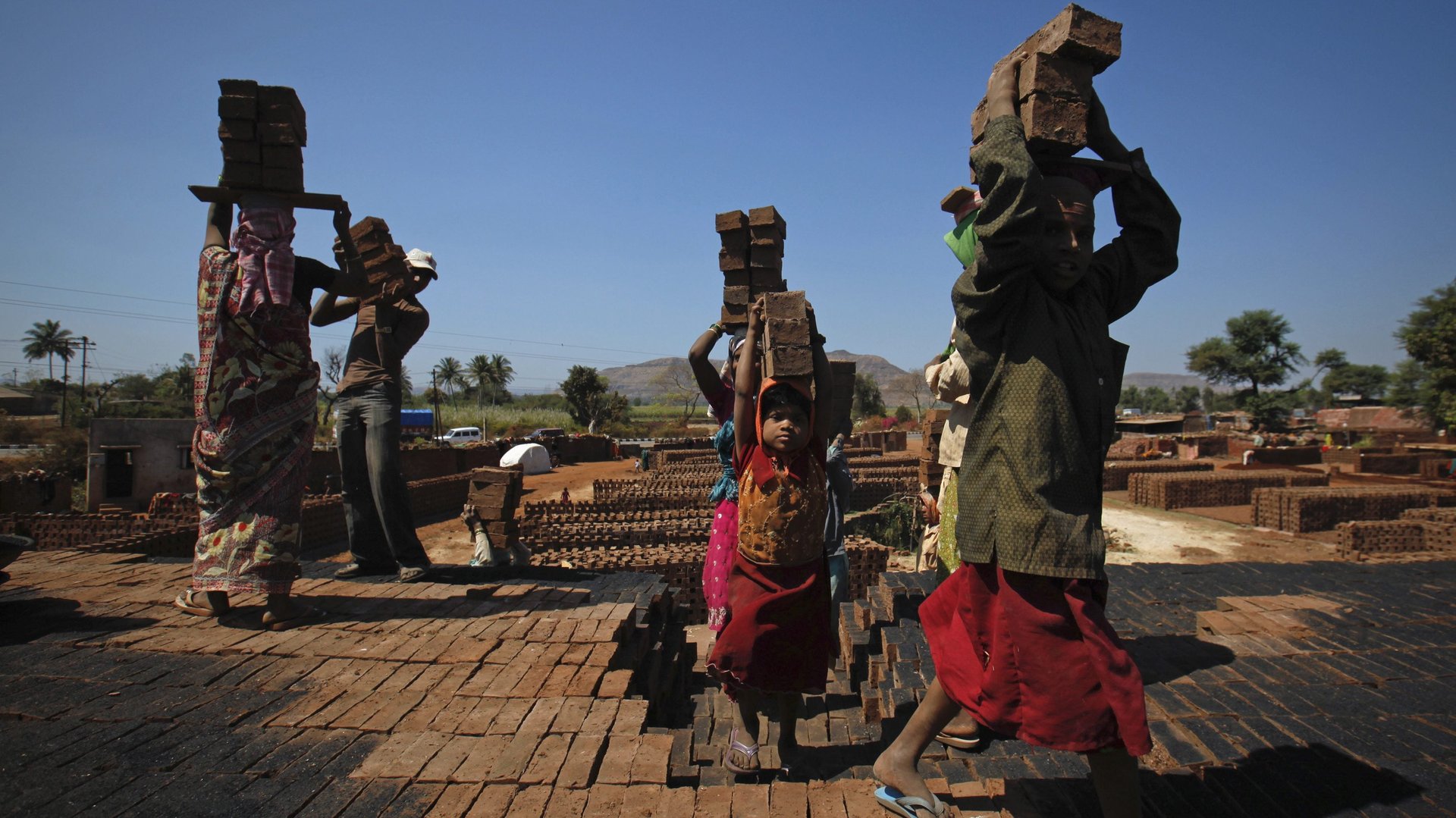Researchers are using Google Maps and satellite images to track slaves in India
India is home to the largest share—nearly 40%—of the modern-day slave population in the world. And this deplorable situation is likely to worsen, thanks to the construction boom in the country, which depends on nearly 100,000 brick kilns that employ a bulk of the slaves.


India is home to the largest share—nearly 40%—of the modern-day slave population in the world. And this deplorable situation is likely to worsen, thanks to the construction boom in the country, which depends on nearly 100,000 brick kilns that employ a bulk of the slaves.
So a group of researchers is now battling the problem by using satellite imagery to track brick kilns across India where exploitation may be taking place. The Rights Lab researchers at the University of Nottingham in the UK are using Google Maps, along with help from citizen-volunteers, to identify and report their possible locations.
“The key thing at the moment is to get those statistics right and to get the locations of the brick kilns sorted,” Doreen Boyd, part of Nottingham’s Slavery from Space project, told Reuters. ”There are certainly activists on the ground who will help us in terms of getting the statistics and the locations of these brick kilns to (government) officials.”
The team is currently focused on a 2,600 square kilometer area in the desert state of Rajasthan, with future plans of expanding nationally and globally to realise the United Nations’ vow to end slavery by 2030.
To gather more pronounced results, they want to move beyond the publicly available data from Google and tap into more detailed images from satellite companies.
India’s slavery problem
Modern slavery, defined as a situation where a person “cannot refuse or leave because of threats, violence, coercion, abuse of power or deception, with treatment akin to a farm animal,” by the Global Slavery Index (GSI), is embarrassingly widespread in India today.
The country has over 18.3 million of the world’s nearly 46 million enslaved people.
Employing over 23 million people, brick kilns in India are notorious for cultivating a culture of bonded labour in subpar conditions, affecting both adults and children.
With India poised to become the world’s third-largest construction market—valued at over $1 trillion—by 2030, the demand for India’s trademark red bricks will likely rise as well.
However, tracking labourers in brick kilns could only be part of the solution. Because even though bonded labour was abolished in 1976, the practice is still prevalent across various industries, from rice mills to rock quarries to brothels.
And India has many battles to fight—poverty, gender inequality, classism—before it can truly free itself from slavery.